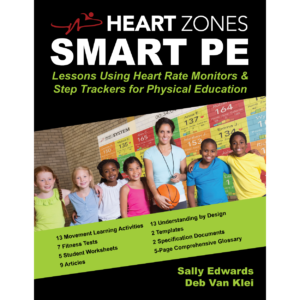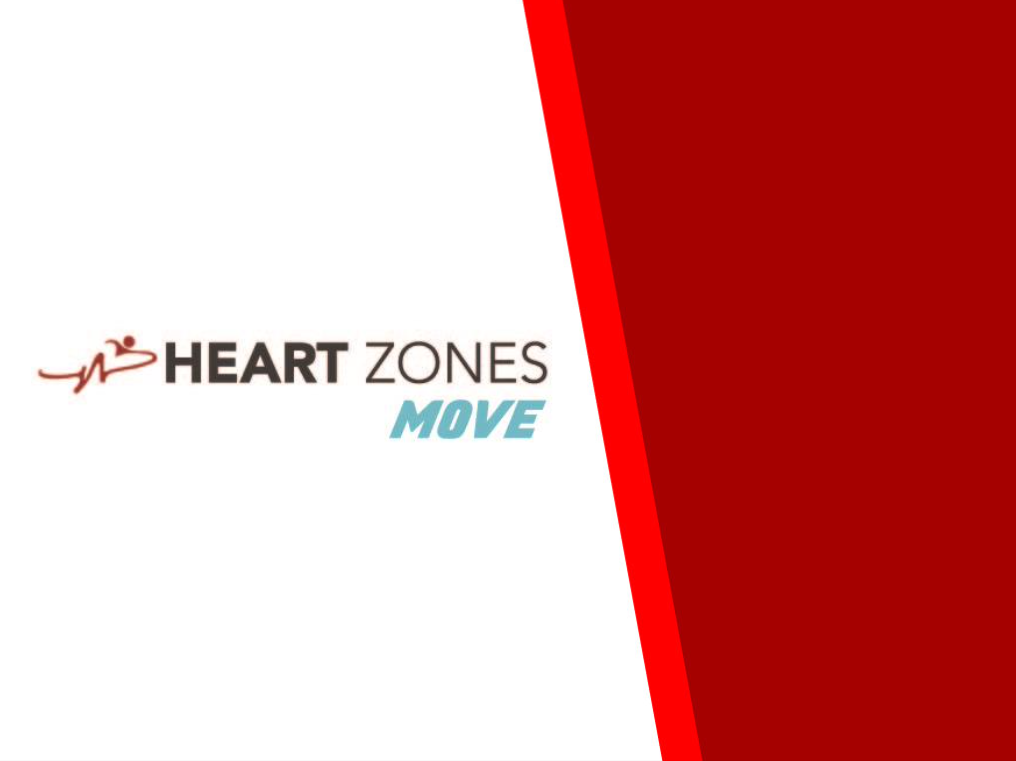Use Your ESSER Funding for Health and Physical Education to Promote Social, Emotional, and Physical Learning

Darrel Salmi, Stillwater High School, MN teaching physical literacy using Heart Zones Methods
Funding is readily available for your school physical and health education program. It is easy to request. It is easy to get it. This is federal not local funding which has already been allocated to your school. Technology purchases are encouraged and warranted. This article is an update on the third round of federal funding provided as a result of the pandemic, ESSER III. Read several previous articles that share how to access money from the first two rounds for school PE and health.
Lots of Money Available: Round 3 Funding – ESSER III of American Rescue Plan[1]
All three rounds of funding currently available for schools allow for “Purchasing educational technology (including hardware, software, and connectivity) for students.”[2] That means that a portion of the $190.5 billion rescue plan for schools qualifies you to purchase technology hardware such as Heart Zones wearables, software like the Heart Zones Move application, Heart Zones’ ePE online solution, and connectivity devices for example, the Heart Zones Bridge.
Round three funding totaled a staggering $122 billion for all states. You can find out exactly how much your state was awarded for the ESSER funding by checking out your state funds or by clicking here. As just one example, California has been awarded $28 billion in ESSER funding yet only $5 billion has been spent to date.
Every state has 3 years to spend this funding, but it remains a first-come, first-serve opportunity. That means that if you request funding now, your success in being granted funding is much much stronger. Asking for your program now is critical. If you want to know how to ask for this funding for your program you can follow the steps listed in “The CARES Act and Heart Zones Cares – Part 1” included in this 6 part series.
Use ESSER Funding to Raise the Bar
 The days of physical education being viewed as games like “chuck the rubber chicken” are past and long past due. Rather, today’s instructors can access funding for coaching, health and physical education tech, and social and emotional and physical learning. Using ESSER rounds of funding is a shout-out for all physical educators to raise the bar and embrace a smart approach with Smart PE. Smart PE moves minds and engages hearts. That is, Smart PE is a technology connected to a curriculum based on using data to drive results. Smart PE is the use of smart devices to engage smart hearts and stimulate mental acuity. You can fund your Smart PE initiative by using the funding in any of the three rounds of ESSER funding to purchase technology, professional development, and curriculum.
The days of physical education being viewed as games like “chuck the rubber chicken” are past and long past due. Rather, today’s instructors can access funding for coaching, health and physical education tech, and social and emotional and physical learning. Using ESSER rounds of funding is a shout-out for all physical educators to raise the bar and embrace a smart approach with Smart PE. Smart PE moves minds and engages hearts. That is, Smart PE is a technology connected to a curriculum based on using data to drive results. Smart PE is the use of smart devices to engage smart hearts and stimulate mental acuity. You can fund your Smart PE initiative by using the funding in any of the three rounds of ESSER funding to purchase technology, professional development, and curriculum.
Use ESSER Funding for both Online and In-Person PE
Hybrid instruction[3] is here to stay. This is one of the few good outcomes of the Covid-19 pandemic on the education system. ESSER funding can be used for you to have the opportunity to offer the best of both styles of instruction. Hybrid is different than blended learning as it seeks to find a flexible balance of online and offline. Heart Zones’ ePE online solution is a good example that promotes the best individual experience. By using online solutions like ePE you are adding accountability for or the remote student.
In the Stillwater School district in Minnesota, students had to choose between online or live classroom PE. That can change by your asking your administration for ESSER funds to purchase technology. According to Darrell Salmi, 2019 Minnesota PE teacher, football coach, and board member of Minnesota Shape, “You can use the simplicity of the Heart Zones Move solution and the ability to have meaningful technology to enhance both the in-person and the on-line learning in a student’s Physical Education experience. Assessment is objective and based on effort, not sports skill ability.” As Salmi continues, “Teachers are not guessing when assessing. Feedback is also more meaningful because it is timely and personalized.”
Be Persistent
 Here’s what you need to do – ask and then keep asking. Persistence is key to your success. Keep asking and show your coordinators and administrators “the money.” The funding is there for the one who keeps on asking.
Here’s what you need to do – ask and then keep asking. Persistence is key to your success. Keep asking and show your coordinators and administrators “the money.” The funding is there for the one who keeps on asking.
Below is a list of every state and the amount of ESSER-CARES-APR money that has been allocated to your state as well as what’s available today. Find your state in the list and see how many millions of dollars of unspent federal money are available to your school now if you ask. Here’s how to ask.
In conclusion, the funding is available to you. “Raise the bar” on your program as you head back to school this fall by requesting a free online demo of the Heart Zones Move Solution. Book a professional development workshop for your team. Join the Smart PE movement to motivate minds and engage your students’ hearts this year.
___________________________________
About Heart Zones
Founded in 1993, Heart Zones is the premier group tracking and wearable solution for school health, physical education, healthcare, and coaching. Currently deployed in over 1,500 locations in the USA and 8 countries, Heart Zones national headquarters is located in Sacramento, California. Heart Zones is committed to offering fitness and health technology, education, and training solutions to engage and motivate students and instructors.
___________________________________
| Available ESSER Funding by State | ||||
| State | Amount
Awarded |
Percentage
Spent |
Amount
Spent |
AVAILABLE
NOW |
| Alabama | 2,463,126,116 | 4.9% | 121,127,436 | $2,341,998,680 |
| Alaska | 437,265,425 | 0.065 | 28,211,210 | $409,054,215 |
| Arizona | 3,148,538,022 | 8.4% | 264,241,716 | $2,884,296,306 |
| California | 18,402,863,024 | 9.4% | 1,722,398,208 | $16,680,464,816 |
| Colorado | 1,417,870,514 | 4.3% | 61,240,903 | $1,356,629,611 |
| Connecticut | 1,340,774,433 | 6.2% | 83,640,861 | $1,257,133,572 |
| Delaware | 637,239,246 | 7.5% | 47,767,035 | $589,472,211 |
| District of Columbia | 600,496,527 | 2.5% | 15,232,444 | $585,264,083 |
| Florida | 8,596,290,866 | 9.7% | 837,761,466 | $7,758,529,400 |
| Georgia | 6,601,694,161 | 12.2% | 803,483,211 | $5,798,210,950 |
| Hawaii | 501,866,283 | 18.7% | 94,076,457 | $407,789,826 |
| Idaho | 537,039,802 | 9.9% | 52,961,839 | $484,077,963 |
| Indiana | 2,432,479,011 | 6.2% | 150,625,584 | $2,281,853,427 |
| Iowa | 1,191,543,114 | 11.7% | 139,667,573 | $1,051,875,541 |
| Kansas | 1,285,529,410 | 6.1% | 77,853,676 | $1,207,675,734 |
| Kentucky | 2,511,310,365 | 8.7% | 218,863,938 | $2,292,446,427 |
| Louisiana | 3,184,075,103 | 6.8% | 217,971,048 | $2,966,104,055 |
| Maine | 501,134,108 | 3.8% | 18,900,471 | $482,233,637 |
| Maryland | 2,377,363,169 | 2.8% | 66,784,704 | $2,310,578,465 |
| Massachusetts | 2,861,201,703 | 4.3% | 123,837,599 | $2,737,364,104 |
| Michigan | 4,525,994,022 | 5.8% | 261,006,618 | $4,264,987,404 |
| Minnesota | 1,608,604,111 | 4.8% | 77,521,586 | $1,531,082,525 |
| Mississippi | 1,979,214,418 | 5.1% | 101,921,386 | $1,877,293,032 |
| Missouri | 2,383,968,401 | 15.9% | 379,531,076 | $2,004,437,325 |
| Montana | 466,074,186 | 6.5% | 30,406,574 | $435,667,612 |
| Nebraska | 672,097,694 | 7.2% | 48,267,163 | $623,830,531 |
| Nevada | 1,309,173,078 | 3.7% | 48,998,447 | $1,260,174,631 |
| New Hampshire | 427,374,934 | 4.2% | 17,998,492 | $409,376,442 |
| New Jersey | 3,384,401,439 | 6.2% | 209,800,748 | $3,174,600,691 |
| New Mexico | 1,524,275,357 | 5.1% | 77,779,515 | $1,446,495,842 |
| New York | 11,031,947,898 | 5.7% | 629,918,068 | $10,402,029,830 |
| North Carolina | 4,398,363,731 | 7.2% | 314,527,799 | $4,083,835,932 |
| North Dakota | 372,733,345 | 4.4% | 16,242,999 | $356,490,346 |
| Ohio | 6,955,699,808 | 7% | 488,090,866 | $6,467,608,942 |
| Oklahoma | 2,320,636,280 | 12.5% | 290,233,115 | $2,030,403,165 |
| Oregon | 1,742,067,894 | 5.7% | 100,146,784 | $1,641,921,110 |
| Pennsylvannia | 6,080,073,329 | 7.8% | 476,848,215 | $5,603,225,114 |
| Puerto Rico | 3,647,031,773 | 0.9% | 31,749,185 | $3,615,282,588 |
| Rhode Island | 646,287,850 | 5.4% | 34,993,438 | $611,294,412 |
| South Carolina | 2,564,766,265 | 5.7% | 146,088,705 | $2,418,677,560 |
| South Dakota | 593,413,931 | 4.3% | 25,798,581 | $567,615,350 |
| Tennessee | 3,856,970,583 | 7.4% | 287,103,019 | $3,569,867,564 |
| Texas | 19,242,961,540 | 6.3% | 1,202,990,651 | $18,039,970,889 |
| Utah | 957,822,487 | 4.5% | 42,638,076 | $915,184,411 |
| Vermont | 348,231,148 | 3.3% | 11,585,334 | $336,645,814 |
| Virginia | 2,584,206,937 | 4.1% | 106,734,384 | $2,477,472,553 |
| Washington | 2,276,745,451 | 9.5% | 215,517,788 | $2,061,227,663 |
| West Virginia | 1,187,632,662 | 7.3% | 86,778,759 | $1,100,853,903 |
| Wisconsin | 1,888,023,915 | 6.3% | 118,454,101 | $1,769,569,814 |
| Wyoming | 370,266,478 | 5.9% | 21,861,463 | $348,405,015 |
| For the reporting period ending June 30, 2021 More details available: https://covid-relief-data.ed.gov | ||||
health technology, education, and training solutions to engage and motivate both instructors and students.
___________________________________
[1] The official name is as follows: The American Rescue Plan (ARP) Act Elementary and Secondary School Emergency Relief (ESSER III) Funds
[2] https://www.cde.ca.gov/fg/cr/esseriiifaqs.asp
[3] Hybrid instruction, or hybrid courses, refer to classes where there is a carefully planned blend of both traditional classroom instruction and online learning activities.







